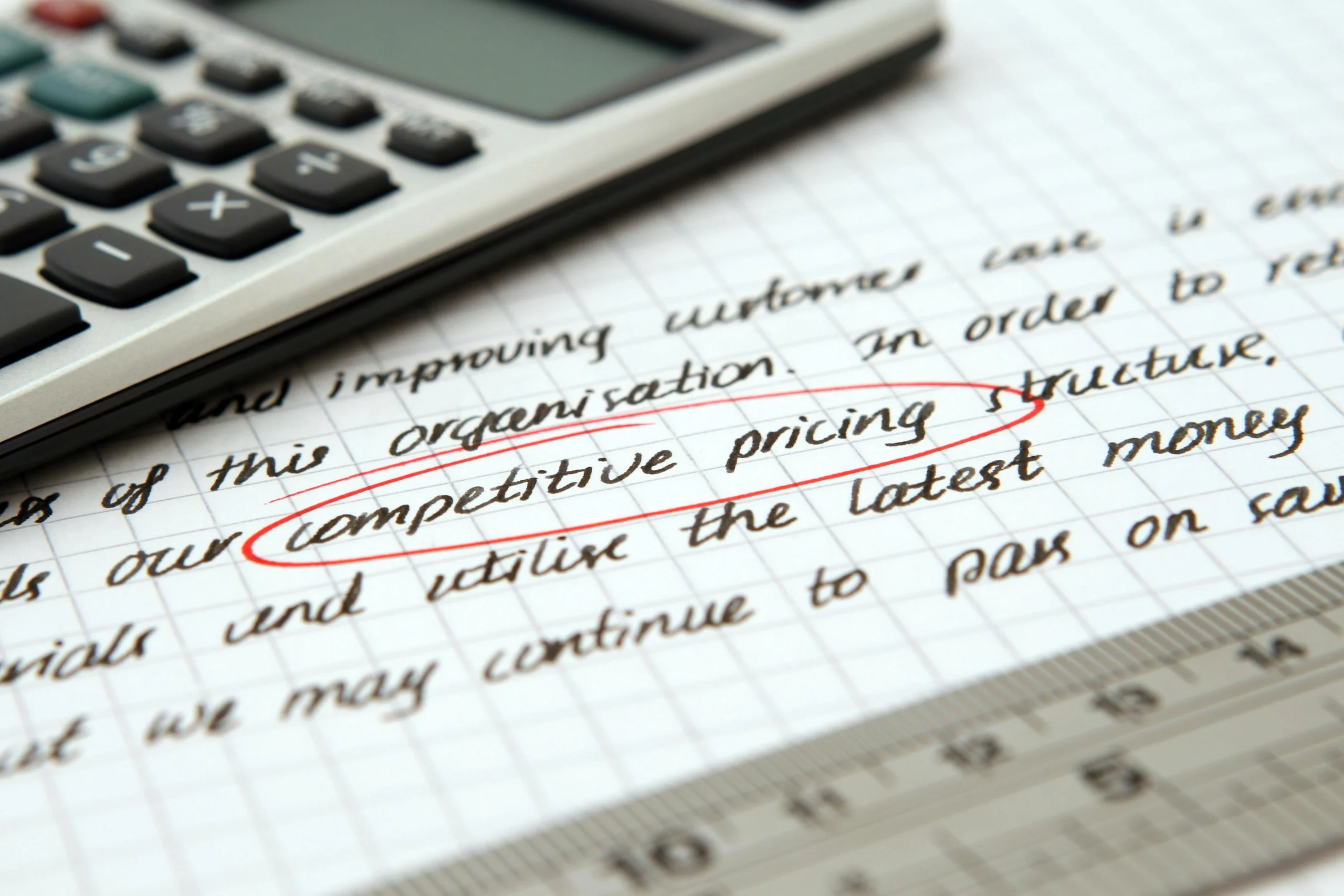Introduction
Effectively managing your company’s capital structure is crucial for long-term financial health and growth. This guide offers a step-by-step approach to optimize your company’s capital structure, enhancing profitability and minimizing risk. Understanding the blend of debt and equity that funds your operations is the first step towards a more efficient financial strategy. A well-optimized capital structure can lead to a lower cost of capital and improved shareholder value.
Many businesses, especially startups and SMEs, face challenges in securing optimal funding. This can lead to unnecessary expenses and hinder expansion. By following this guide, you can gain insights into assessing your current situation and strategically adjusting your capital mix.
Why Optimize Your Capital Structure?
- Lower Cost of Capital: Reduce interest payments and equity dilution.
- Increased Profitability: Free up cash flow for reinvestment.
- Reduced Financial Risk: Balance debt and equity to avoid over-leverage.
- Improved Valuation: Attract investors with a stronger financial profile.
What to Expect from this Guide
This guide provides a practical, step-by-step framework for analyzing and adjusting your capital structure. We’ll cover key areas, including assessing your current capital structure, evaluating funding options, and implementing changes to achieve your financial goals. Let’s delve into how to optimize your company’s capital structure. Understanding your current financial standing is paramount, as outlined by resources like the one at Investopedia.
Related Articles
- Insider Insights: How Top CFOs Optimize Capital Allocation
- How to Prepare Your Company for an IPO: A Comprehensive How-To Guide
Step 1: Understand Your Company’s Current Financial Position
Laying the Foundation for Strategic Capital Structure Optimization
Before you can begin to optimize your company’s capital structure, it’s crucial to establish a firm grasp of your current financial standing. This initial step involves a thorough assessment of your assets, liabilities, and equity. Understanding these elements provides the baseline against which all future adjustments will be measured.
Key Financial Statements to Analyze
This comprehensive review should include a deep dive into the following financial statements:
- Balance Sheet: A snapshot of your company’s assets, liabilities, and equity at a specific point in time. Analyze trends in key ratios such as debt-to-equity.
- Income Statement: Also known as the Profit and Loss (P&L) statement, this reveals your company’s revenues, expenses, and profitability over a period. Pay close attention to gross profit margin and net profit margin.
- Cash Flow Statement: Tracks the movement of cash both into and out of your company, categorized by operating, investing, and financing activities. This highlights liquidity and working capital management.
Critical Metrics for Capital Structure Decisions
Alongside these statements, calculate and analyze key financial ratios that directly impact capital structure decisions. These may include:
- Debt-to-Equity Ratio: Indicates the proportion of debt versus equity used to finance your assets. Learn more about debt-to-equity ratios.
- Interest Coverage Ratio: Measures your company’s ability to pay its interest expenses.
- Return on Equity (ROE): Shows how effectively your company is using equity investments to generate profits.
- Weighted Average Cost of Capital (WACC): Determine the average cost of all of your company’s capital sources, including debt and equity.
By diligently analyzing these statements and ratios, you gain a clear understanding of your company’s current financial health and identify areas where optimizing your capital structure can lead to improved performance and long-term sustainability. This knowledge is essential for making informed decisions about future financing strategies.
Step 2: Define Your Company’s Strategic Goals and Risk Tolerance
Before diving into specific financial instruments, you must establish a solid foundation by clearly defining your company’s strategic goals. What are you trying to achieve in the short, medium, and long term? Are you focused on rapid growth, stable profitability, or maximizing shareholder value? Understanding these overarching objectives is crucial for making informed decisions about your capital structure.
Closely linked to strategic goals is your company’s risk tolerance. How much risk are you willing to accept to achieve those goals? This assessment impacts the mix of debt and equity you choose to finance your operations. A higher risk tolerance may allow for greater leverage (more debt), while a more conservative approach might favor equity financing. Consider the following factors when evaluating your risk tolerance:
- Industry Volatility: How susceptible is your industry to economic downturns or technological disruption?
- Competitive Landscape: How intense is the competition in your market?
- Management’s Experience: How experienced is your management team in navigating financial risks?
Defining these parameters will serve as a compass throughout the process of optimizing your company’s capital structure. A well-defined risk tolerance helps determine the appropriate debt-to-equity ratio and avoid financial distress, ensuring long-term financial stability. Consider seeking guidance from a financial advisor to help with this crucial assessment. Further resources are available on the SEC website regarding understanding capital structure.
Remember that optimizing your capital structure is an ongoing process. As your company evolves and market conditions change, you may need to revisit your strategic goals and risk tolerance and adjust your financial strategy accordingly.
Step 3: Explore Different Capital Structure Options
Now that you’ve assessed your company’s current financial situation, it’s crucial to explore various capital structure options. Optimizing your company’s capital structure involves finding the ideal mix of debt and equity financing to minimize your cost of capital and maximize shareholder value. This exploration is key to effectively managing your company’s financials.
Understanding Debt vs. Equity
The fundamental decision involves the proportion of debt and equity. Consider the following:
- Debt: Offers tax advantages due to interest deductibility but increases financial risk due to mandatory payments. Learn more about debt financing at Investopedia.
- Equity: Avoids mandatory payments but dilutes ownership and can be more expensive in the long run. Discover the basics of equity financing.
Common Capital Structure Options
Several capital structure options exist, each with its own advantages and disadvantages. Evaluate these options in the context of your specific business needs and market conditions:
- Conservative Structure: High equity, low debt. Low risk, but potentially lower returns.
- Aggressive Structure: High debt, low equity. Higher potential returns, but also higher risk.
- Balanced Structure: A mix of debt and equity that aims to strike a balance between risk and return.
Factors to Consider
When evaluating different capital structure options for how to optimize your company’s capital structure, remember to consider these key factors:
- Industry Norms: Understand the typical capital structures in your industry.
- Company Life Cycle: Start-ups may rely more on equity, while mature companies may use more debt.
- Management’s Risk Tolerance: Align the capital structure with the company’s risk appetite.
Step 4: Analyze the Costs and Benefits of Each Option
After identifying potential capital structure options – such as issuing more debt, equity, or restructuring existing debt – it’s crucial to rigorously analyze the costs and benefits of each. This analysis is key to optimizing your company’s capital structure.
Quantifying the Financial Impact
Start by calculating the specific financial impacts. This includes:
- Cost of Capital: Determine the weighted average cost of capital (WACC) for each scenario. A lower WACC generally indicates a more efficient capital structure.
- Earnings Per Share (EPS): Project the impact on EPS. Will the change dilute or enhance shareholder value?
- Debt Ratios: Assess changes in debt-to-equity, debt-to-asset, and interest coverage ratios. Higher debt levels can increase financial risk.
- Free Cash Flow: Understand how each option affects your company’s free cash flow generation.
Assessing Non-Financial Factors
Beyond the numbers, consider non-financial factors that might influence your decision. These can be more difficult to quantify but are equally important:
- Flexibility: Does the option provide sufficient financial flexibility to adapt to future opportunities or challenges?
- Control: Will issuing equity dilute the control of existing shareholders?
- Market Perception: How will investors and creditors perceive the change? Will it improve or damage your company’s reputation?
Risk Assessment
A critical element of this analysis is a thorough risk assessment. Consider the potential downsides of each option, such as increased financial distress risk with higher debt or the dilution of ownership with equity issuance. Stress test your projections under different economic scenarios to understand the potential vulnerabilities of each capital structure decision. For more information on risk management, see Investopedia’s explanation of risk management.
Step 5: Implement and Monitor Your Optimized Capital Structure
Now that you’ve analyzed and planned your optimal capital structure, it’s time to put it into action. Implementing your optimized plan involves actively adjusting your debt and equity mix. This might involve issuing new stock, refinancing existing debt, or even considering strategic acquisitions or divestitures.
Successful capital structure optimization doesn’t end with implementation. Ongoing monitoring is crucial. Track key financial metrics like your debt-to-equity ratio, interest coverage ratio, and cost of capital. Compare these metrics against your initial projections and industry benchmarks.
Here are some key monitoring activities:
- Regularly review your financial statements.
- Track changes in market conditions (interest rates, stock prices).
- Assess the impact of the optimized capital structure on profitability and shareholder value.
- Compare your company’s performance against industry peers.
Be prepared to make adjustments as needed. The business environment is constantly evolving, and your company’s capital structure should adapt accordingly. Consider consulting with financial advisors to ensure your strategy remains aligned with your long-term goals. For further information on corporate finance strategy, review this resource on corporate finance strategy from the Corporate Finance Institute.
Remember that optimizing your company’s capital structure is a continuous process, not a one-time event. Consistent monitoring and adjustments are key to achieving long-term financial success.
Step 6: Refinancing Opportunities
Explore Refinancing Strategies
Optimizing your company’s capital structure often involves exploring refinancing opportunities. This crucial step focuses on replacing existing debt with new debt that offers more favorable terms. Effective capital structure optimization can yield significant benefits, including reduced interest expenses and improved cash flow.
Identifying Refinancing Triggers
Consider refinancing when:
- Interest rates have decreased.
- Your company’s credit rating has improved.
- You need to consolidate multiple debts.
- You require more flexible loan terms.
Evaluate Potential Benefits
Before committing to refinancing, carefully evaluate the potential benefits. Key considerations include the new interest rate, loan term, associated fees, and any prepayment penalties on the existing debt. A thorough analysis is critical to ensuring that refinancing truly enhances your company’s financial health.
Compare Loan Options
Shop around and compare loan options from various lenders. Explore different types of financing, such as bank loans, bonds, and private credit. A competitive process will help you secure the most advantageous terms for your company. Consider using reputable resources such as the Small Business Administration (SBA) for guidance on loan programs.
Mitigate Risks
Refinancing isn’t without risks. Be mindful of potential prepayment penalties, fluctuating interest rates (for variable-rate loans), and the overall impact on your company’s debt profile. Proper due diligence is essential to making informed decisions.
Legal and Regulatory Considerations
Before making any changes to your company’s capital structure, it’s crucial to understand the legal and regulatory environment. Optimizing your company’s capital structure can involve complex financial instruments and transactions, which are subject to stringent oversight.
Securities Laws Compliance
Issuing new debt or equity to optimize your company’s capital structure triggers various securities laws. Ensure compliance with regulations like the Securities Act of 1933 and the Securities Exchange Act of 1934 in the U.S., or their equivalents in other jurisdictions. The SEC provides resources on securities regulations.
Tax Implications
Different forms of capital (debt vs. equity) have different tax implications. Consider how changes to your capital structure might affect your company’s tax liabilities. Consult with a tax advisor to understand the tax consequences of each option.
Corporate Governance
Major changes to capital structure often require board approval and, in some cases, shareholder approval. Adhere to your company’s corporate governance policies and relevant state or national laws governing corporate actions.
Debt Covenants
If your company already has debt, review existing debt covenants before altering your capital structure. Issuing new debt or equity might violate existing covenants, leading to default. Investopedia offers a definition on debt covenants.
Industry-Specific Regulations
Certain industries, such as banking and insurance, are subject to specific capital adequacy regulations. Ensure that any changes to your capital structure comply with these industry-specific requirements.
Common Mistakes to Avoid
Steering Clear of Pitfalls in Capital Structure Optimization
Successfully optimizing your company’s capital structure requires careful planning and execution. Many businesses, in their quest to achieve a more efficient mix of debt and equity, fall prey to easily avoidable errors. Understanding these common mistakes is crucial for anyone seeking a healthier balance sheet and ultimately, improved shareholder value.
Over-Reliance on Short-Term Debt
A frequent misstep is relying too heavily on short-term debt to fund long-term assets. This creates a refinancing risk, exposing the company to potential interest rate hikes and credit market volatility. Aim for a term structure that aligns with your asset profile.
Ignoring the Cost of Capital
Failing to accurately assess the cost of both debt and equity is another significant error. A proper weighted average cost of capital (WACC) calculation is essential to determine if a given capital structure decision is truly beneficial. Consult with a financial expert to precisely assess your situation. For more on WACC calculations, see this CFI article.
Lack of Flexibility
A rigid capital structure can limit your company’s ability to respond to changing market conditions or unexpected opportunities. Ensure your financing agreements allow for some flexibility to adapt to unforeseen circumstances.
Neglecting Shareholder Sentiment
Ignoring the preferences and expectations of your shareholders regarding capital allocation can lead to dissatisfaction and even negative stock price reactions. Communicate openly with your investors and consider their perspectives when making major capital structure changes. Understanding your shareholders is critical to proper capital structure optimization.
Insufficient Due Diligence
Rushing into major financing decisions without conducting thorough due diligence on potential lenders or investors can lead to unfavorable terms or hidden risks. Always take the time to carefully evaluate all options before committing to a particular course of action.
Conclusion
Optimizing your company’s capital structure is a continuous process, not a one-time fix. By systematically evaluating your existing debt-to-equity ratio, understanding your cost of capital, and implementing a strategic plan, you can significantly improve financial performance. Successfully managing your capital structure is key to achieving long-term growth and stability.
Remember to regularly reassess your financial situation and adapt your capital structure strategy as your business evolves and market conditions change. Proactive monitoring and adjustments are crucial for maintaining a competitive advantage and maximizing shareholder value. Further reading on corporate finance can be found at Corporate Finance Institute.
Key takeaways for optimizing your company’s capital structure include:
- Prioritize profitability and cash flow management.
- Maintain financial flexibility to capitalize on opportunities.
- Diversify your funding sources to mitigate risk.
- Regularly monitor key performance indicators (KPIs).
By implementing these steps, you can effectively optimize your company’s capital structure, paving the way for sustainable success and financial resilience. Continuously seek expert financial advice to ensure best practices and compliance.
FAQs
Common Questions About Capital Structure Optimization
Want to improve your company’s financial health? Optimizing your capital structure is key. But it can seem daunting. We’ve compiled some frequently asked questions to help you navigate this process. Understanding how to best structure your debt and equity is crucial for long-term success. These are some commonly asked questions about how to optimize your company’s capital structure.
What exactly does ‘optimizing capital structure’ mean?
It means finding the ideal mix of debt and equity financing that minimizes your company’s cost of capital and maximizes its value. A well-optimized structure can improve your financial flexibility and attractiveness to investors. For further reading, consider the Investopedia definition of capital structure.
How often should I re-evaluate my company’s capital structure?
At least annually, or whenever there’s a significant change in your business environment, industry, or financial performance. Consider factors like changing interest rates, economic conditions, and your company’s growth plans.
What are some common mistakes companies make when managing their capital structure?
- Over-relying on debt, which can increase financial risk.
- Not taking advantage of tax benefits associated with debt.
- Failing to adapt their structure to changing market conditions.
- Ignoring the impact of capital structure on shareholder value.
What metrics should I use to assess my capital structure?
Key metrics include debt-to-equity ratio, interest coverage ratio, weighted average cost of capital (WACC), and return on invested capital (ROIC). Analyze these ratios to gauge your financial leverage and profitability.
How can I reduce my company’s debt burden?
Explore options such as refinancing debt at lower interest rates, generating more free cash flow through improved operations, issuing equity to pay down debt, or restructuring your debt obligations.

I’m a passionate writer and digital storyteller with a keen interest in technology, current affairs, and creative expression. Whether I’m researching the latest trends or sharing my thoughts on everyday topics, I aim to connect with people through honest and engaging content. When I’m not busy writing, you’ll likely find me exploring new ideas, reading widely, or enjoying the great outdoors. Thanks for visiting my profile—let’s share some great stories together!





